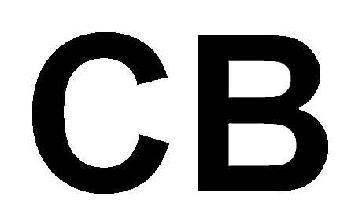CB certification
The CB (certification body) process is based on an international agreement based on IECEE's "world system of electrical product qualification testing and certification".It is an agreement between national accrediting agencies within the system and is committed to mutual recognition of the results of the audit of electrical products.For the CB system of nations from 53 countries, including major industrialized countries, assigns the organization, are affiliated to the CB certification process - many countries it is considered to be within the eu, including those who have not yet become a formal member countries) of the foundation of the domestic certification.CB certification is only for sample detection.If a foreign certification mark is converted, a factory inspection is required.The CB certificate must be shown at the same time as the CB test report.Should be paid attention to when the applicant to apply for CB certificate, be the first to CQC and CBTL instructions to export countries/regions, so that the certification body to help understand the different national standards, the timely arrangement difference experiment, avoid the applicant to foreign certification body/inspection agency to apply for to fill do experiments, delay the approval process and put more expenses.CB certification is applicable in the member countries of the CB system, covering both developed and most developing countries.CE standard applies to 28 European countries such as the European Union.CB certification covers safety requirements only, even if the CB certification includes the differences in the European Union, but if the product is covered by other eu directives (such as electromagnetic compatibility EMC, machinery, etc.), the CB certification will not be able to show that is accord with the requirement of CE marking, only shows that the product has the CE mark the requirements of the low voltage directive (LVD), not paste the CE mark on product, must supplement relevant electromagnetic compatibility EMC test.CE mark contains multiple instructions, but when the product is only suitable for low voltage directive (LVD), include the difference of CB is accord with the requirement of CE marking, certification of the enterprise so can paste the CE marking on the product.

CB certification scope
The products covered by the CB system are products within the IEC standard range recognized by the IECEE system.The new IEC standard will be adopted by the CB system when more than three member states announce that they want and support a standard to join the CB system.The IEC standards used are published on the CB bulletin and the IECEE website.
Electromagnetic compatibility (EMC) is not included in the CB system unless the IEC standard is used.However, the CB system has begun to investigate their willingness to conduct EMC measurements with security tests.The results of this survey will be published in the CB bulletin, which is the subject.
Related organization
The national certification body (NCB) is an accrediting agency for the issuance of accredited certification bodies to electrical products.To be a member of the CB system, NCB's internal quality systems and technical capabilities must meet specific requirements.An NCB can be divided into recognized NCB or issued/recognized NCB by its qualification.A NCB approval issued by the license issuing NCB other CB test certificate and CB test report, as in specific product areas and within the scope of the standard issued certificates and marks on the basis of their own countries.
To apply for the certificate
The following points should be noted for the application of CB test certificates:
The application for the CB test certificate may be submitted by the applicant to any "issuing/accredited" NCB covering the scope of the product.
- an applicant can be either a manufacturer or an entity that is authorized to represent a manufacturer.
- applications can include one or more factories that produce products in one or more countries.
- in countries with no IECEE member within the applicant/manufacturer/factory need to pay extra for each CB test certificate, 150 Swiss francs, to compensate for the running cost of the system.The fee will be charged by NCB, which is accepted for the CB test certificate, and will be in the IECEE's account.
- the applicant may ask the NCB to test the products according to the country's national differences.
The manufacturer shall have the following procedures for product certification in the target market:
- application to the NCB of the target country;
- CB test certificate;
- CB test report (which can include national differences);
- provide product samples to target market NCB requirements.
The purpose of the sample is to confirm that the product is consistent with the product originally tested in the NCB and has covered national differences.
CB test certificate and CB test report
The structure of the organization
The CB system is managed by the certification authority (CMC) and reports to the international electrotechnical commission (IEC) accreditation council (CAB).CAB approves CMC's recommendations on changing the principles of CB systems, official appointments, financial and IECEE policies.CMC's responsibilities are to run, develop and improve the CB system according to the principles of the CB system, decide to accept, reject and suspend membership, and determine the new product category and standards of the CB system.
CMC members composed of representatives from member states, including the NCB, CMC executive (President, vice-president, secretary and treasurer), test lab committee (CTL) chairman and secretary, IEC advisory committee (such as a cosine), safety advisory committee representative, secretary-general of the IEC.
The test lab committee (CTL) consists of representatives from the NCB and CB laboratories.CTL handles testing procedures and explains technical requirements, test conditions, test equipment and comparison testing.Its main objective is to enhance technical credibility and consistency, which is needed in the recognition of the results in the CB system.




